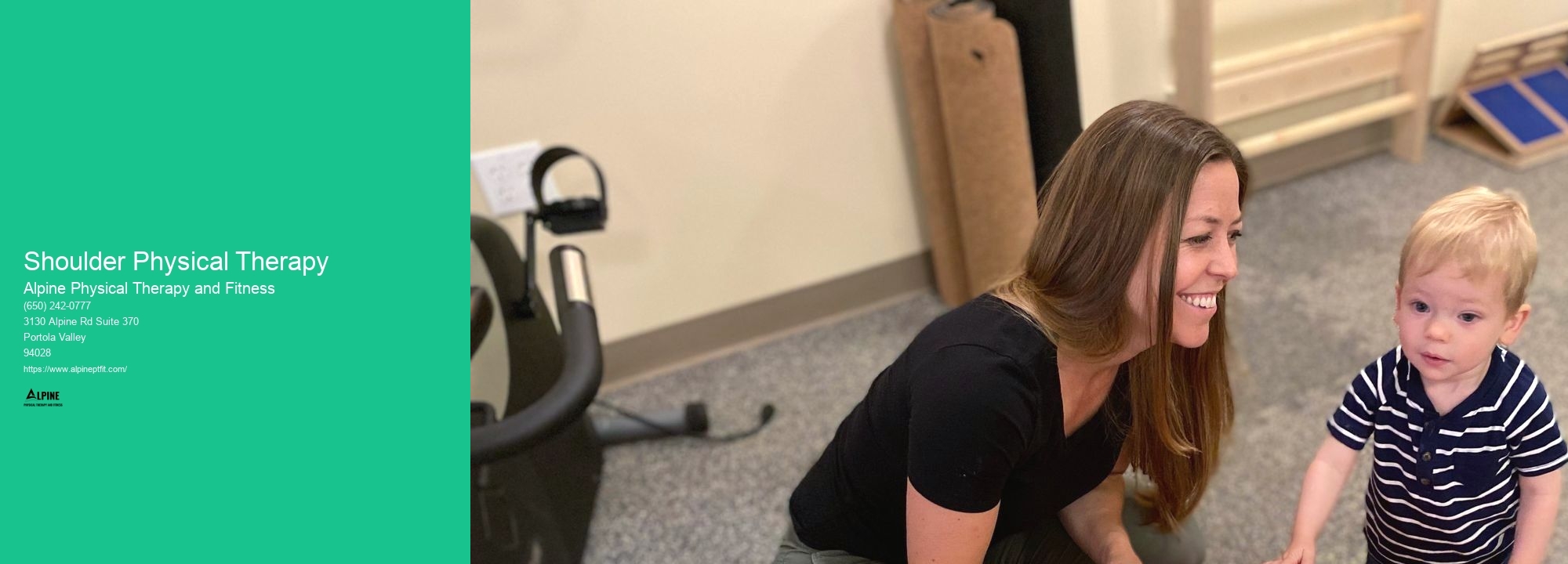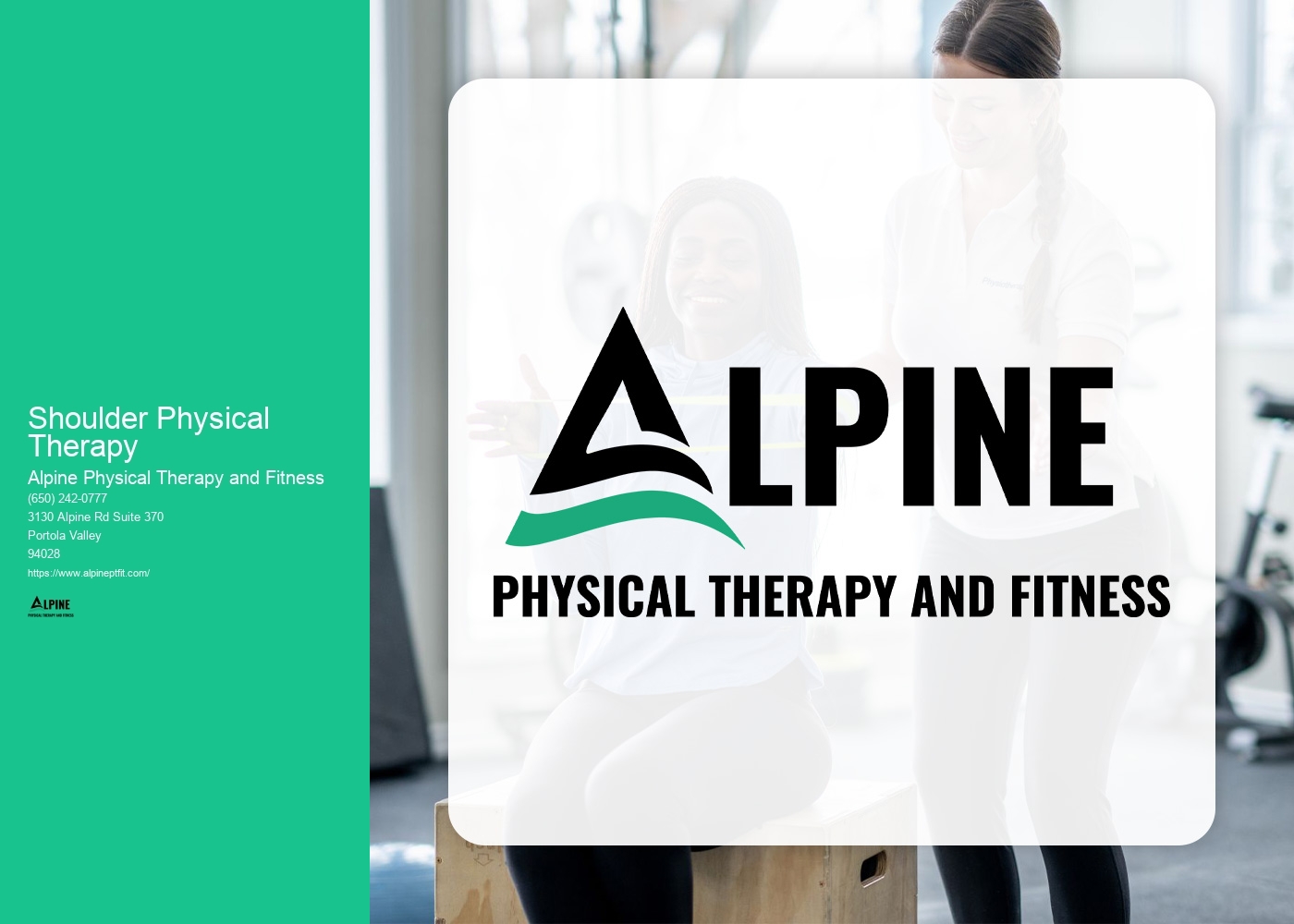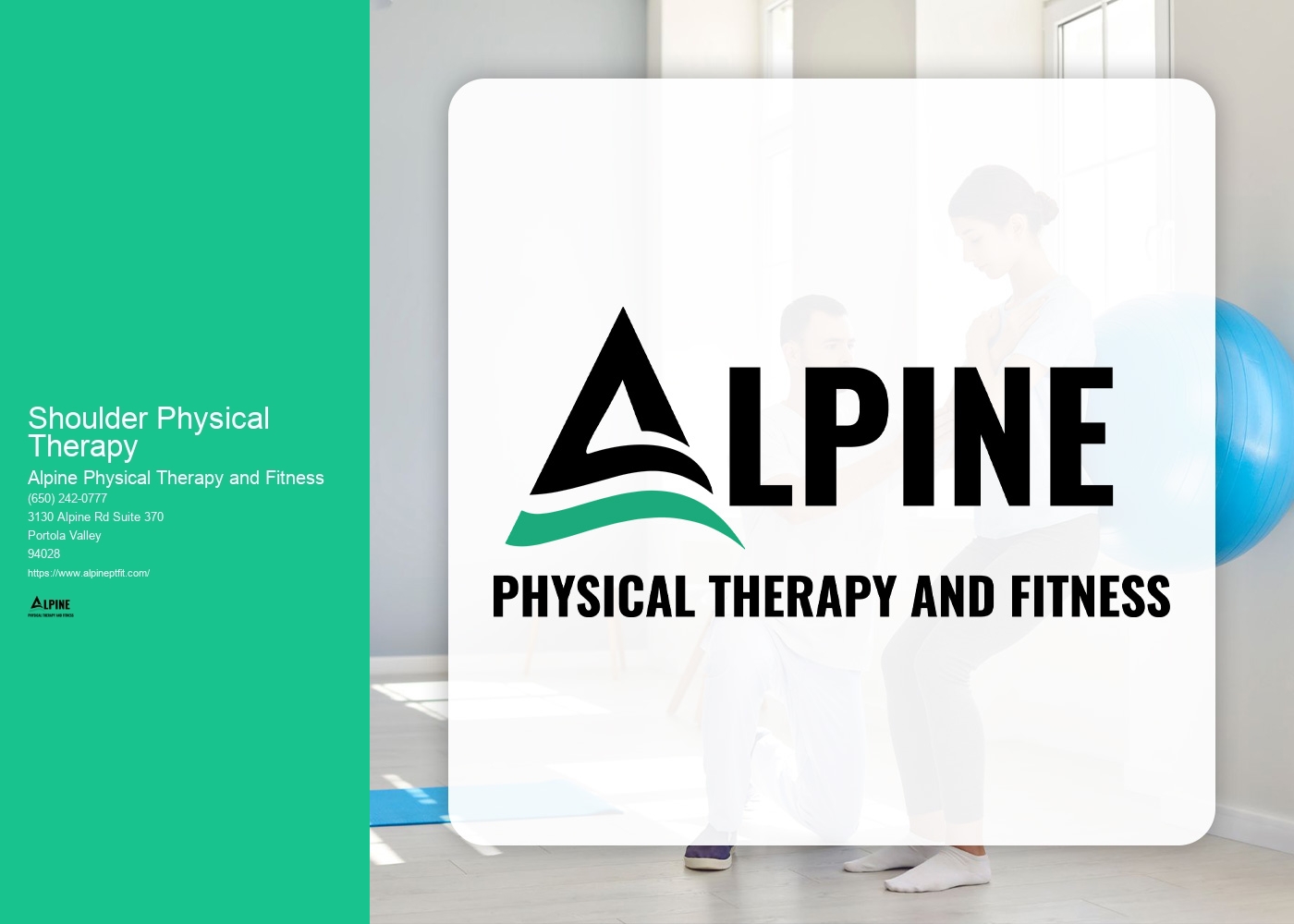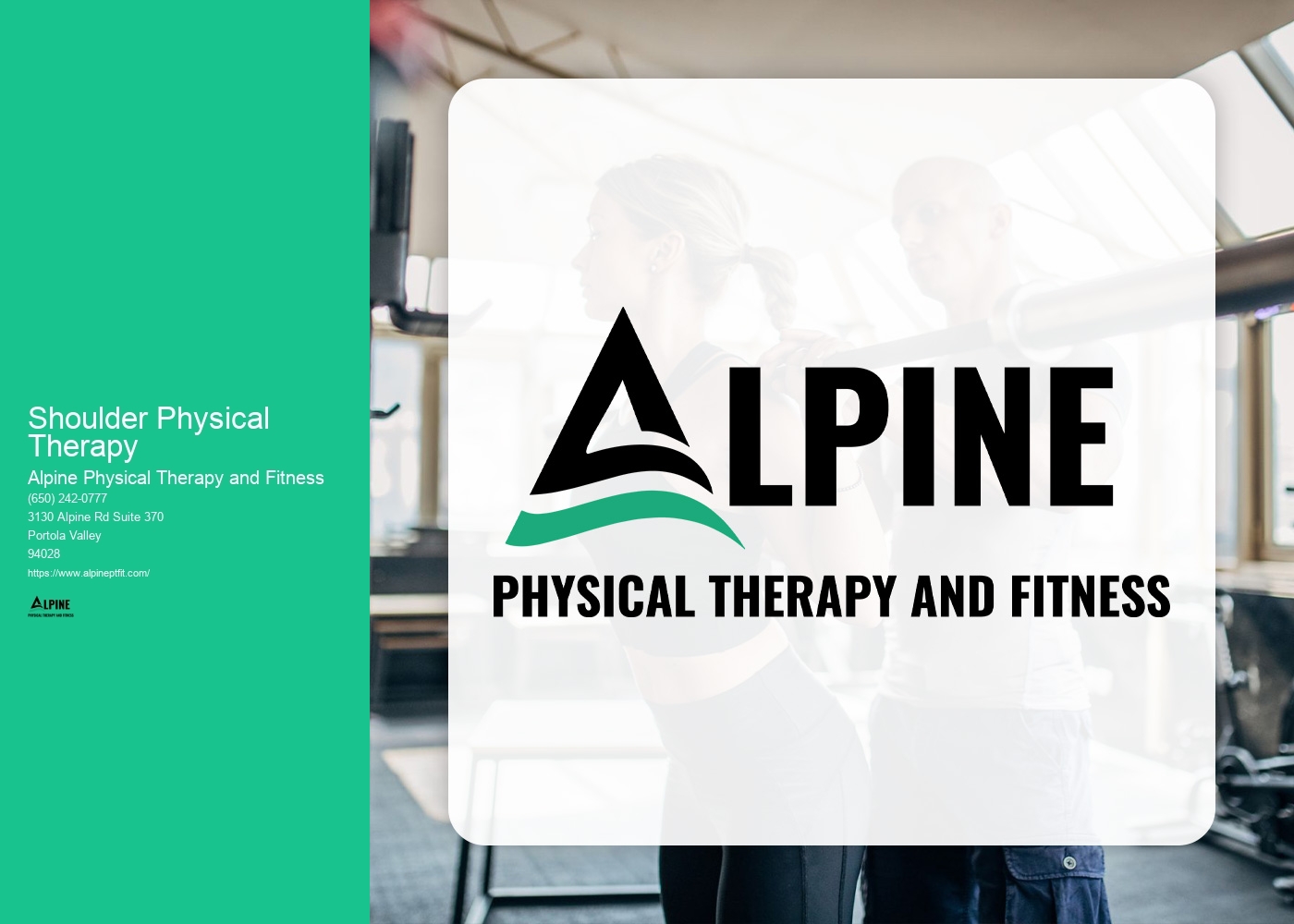

Shoulder injuries that require physical therapy can be caused by a variety of factors. Common causes include repetitive overhead motions, such as those performed in sports like swimming or tennis, which can lead to overuse injuries like rotator cuff tendonitis or impingement syndrome. Traumatic injuries, such as falls or direct blows to the shoulder, can result in fractures, dislocations, or tears of the ligaments or tendons. Additionally, poor posture, muscle imbalances, and age-related degenerative changes can contribute to shoulder injuries that require physical therapy.
The recovery time for a shoulder injury with the help of physical therapy can vary depending on the severity of the injury and the individual's response to treatment. In general, it can take several weeks to several months to fully recover. Physical therapy aims to reduce pain, improve range of motion, strengthen the muscles around the shoulder, and restore functional abilities. The duration of treatment will be determined by the therapist based on the specific needs of the patient and their progress throughout the rehabilitation process.
Exercises and stretches commonly recommended for shoulder rehabilitation include range of motion exercises, such as pendulum swings and shoulder circles, to improve flexibility. Strengthening exercises, such as shoulder presses and rows, help to build muscle strength and stability. Stretching exercises, such as the cross-body stretch and sleeper stretch, can help improve flexibility and reduce muscle tightness. It is important to perform these exercises under the guidance of a physical therapist to ensure proper form and avoid further injury.

During shoulder physical therapy, there are certain precautions and limitations that should be followed to promote healing and prevent further damage. Patients should avoid activities that cause pain or discomfort and should not push through pain during exercises. It is important to follow the therapist's instructions regarding the frequency, duration, and intensity of exercises. Additionally, proper body mechanics and posture should be maintained during daily activities to avoid placing excessive stress on the shoulder joint.
Shoulder physical therapy can be beneficial for chronic shoulder pain and conditions like frozen shoulder. Physical therapy can help reduce pain, improve range of motion, and restore function in these cases. Therapists may use techniques such as manual therapy, joint mobilizations, and therapeutic exercises to address the underlying causes of chronic shoulder pain and promote healing. However, the success of physical therapy in these cases may vary depending on the individual and the specific condition.

Compared to other treatment options, shoulder physical therapy offers several potential benefits. It is a non-invasive and conservative approach that aims to address the root cause of the problem rather than just managing symptoms. Physical therapy can help improve strength, flexibility, and range of motion, which can enhance overall shoulder function and prevent future injuries. It also provides patients with the knowledge and tools to manage their condition independently, reducing the reliance on medication or more invasive interventions.
The frequency and duration of shoulder physical therapy sessions will depend on the individual's specific needs and the severity of their injury. Typically, patients attend physical therapy sessions 1-3 times per week for several weeks or months. The duration of each session can range from 30 minutes to an hour, depending on the treatment plan. The therapist will assess the patient's progress and adjust the frequency and duration of sessions as needed to ensure optimal recovery. It is important to attend all scheduled sessions and actively participate in the prescribed exercises and stretches to achieve the best outcomes.

Myofascial release and deep tissue massage are both therapeutic techniques used to address muscle tension and pain, but they differ in their approach and focus. Myofascial release targets the fascia, a connective tissue that surrounds and supports muscles, bones, and organs. This technique involves applying sustained pressure to release restrictions in the fascia and restore mobility. On the other hand, deep tissue massage primarily targets the deeper layers of muscles and aims to alleviate chronic muscle tension and knots. It involves using firm pressure and slow strokes to reach the underlying muscles and break up adhesions. While both techniques can be effective in relieving pain and improving range of motion, myofascial release focuses more on the fascia, while deep tissue massage targets the muscles themselves.
When rehabilitating a tennis player with elbow pain, there are several specific considerations that need to be taken into account. Firstly, it is important to assess the severity and underlying cause of the pain, as this will guide the treatment plan. Common causes of elbow pain in tennis players include tennis elbow (lateral epicondylitis) and golfer's elbow (medial epicondylitis), which are both overuse injuries. Treatment may involve a combination of rest, ice, compression, and elevation (RICE), as well as physical therapy exercises to strengthen the muscles around the elbow and improve flexibility. Additionally, modifying the player's technique and equipment, such as using a lighter racket or adjusting grip size, may be necessary to prevent further strain on the elbow. It is also important to address any biomechanical issues or imbalances that may be contributing to the pain, such as poor shoulder or wrist stability. Finally, a gradual return to play protocol should be followed to ensure that the player's elbow is fully healed and able to withstand the demands of tennis. Overall, a comprehensive approach that addresses the specific needs of the individual player is essential for successful rehabilitation of tennis-related elbow pain.
Physical therapy can be an effective treatment option for alleviating symptoms of urinary incontinence in women. Through targeted exercises and techniques, physical therapists can help strengthen the pelvic floor muscles, which play a crucial role in bladder control. These exercises may include Kegel exercises, biofeedback training, and electrical stimulation. Additionally, physical therapists can provide education on proper bladder habits and lifestyle modifications that can help manage and reduce urinary incontinence symptoms. By addressing the underlying causes and providing tailored treatment plans, physical therapy can significantly improve bladder control and quality of life for women experiencing urinary incontinence.
The Maitland Concept is a comprehensive approach that guides the assessment and treatment of musculoskeletal conditions. It emphasizes a thorough examination of the patient's history, including the onset and progression of symptoms, as well as any relevant medical conditions or previous treatments. The concept also emphasizes the importance of a detailed physical examination, which includes assessing joint range of motion, muscle strength, and any specific functional deficits. Based on the findings of the assessment, treatment techniques are selected and applied in a systematic manner. These techniques may include joint mobilizations, soft tissue mobilizations, and therapeutic exercises. The Maitland Concept also emphasizes the importance of ongoing reassessment and adjustment of treatment techniques based on the patient's response. Overall, the Maitland Concept provides a structured framework for the assessment and treatment of musculoskeletal conditions, ensuring a comprehensive and individualized approach to patient care.